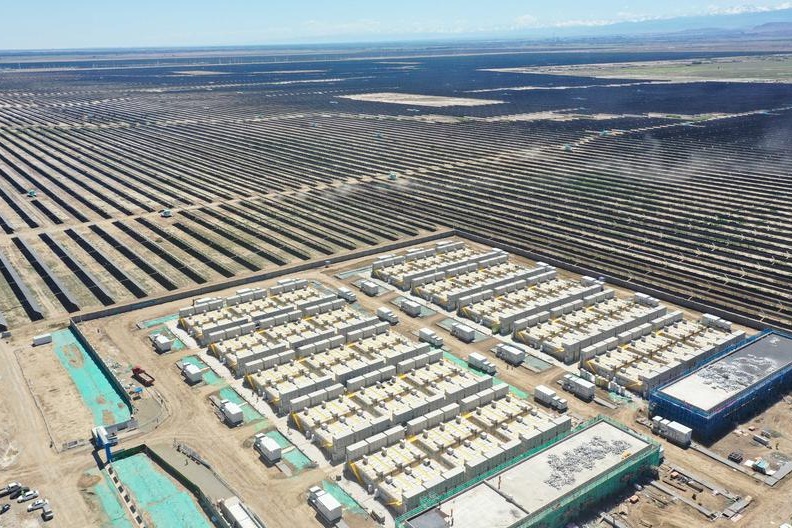Counter-cyclical measures should top consumption policy toolkit

All measures to boost consumption should be prioritized following certain principles, after dividing consumption into four components — total income, primary distribution, secondary distribution and propensity to consume — and analyzing the factors influencing each part.
The State Council, China's Cabinet, issued a special action plan for boosting consumption in March, which comprises 30 key tasks, covering almost all aspects related to consumption.
It is clearly impossible to tackle them all simultaneously. Prioritization based on order of importance and urgency is therefore essential.
To uncover the driving forces of China's consumption, it is crucial not only to examine the determining factors observed in the past, but also evaluate their potential to drive future growth.
Besides, it is important to identify which forces fall under the category of market self-regulation, and those that market mechanisms will drive forward even in the absence of government intervention.
For instance, it can be stated with confidence that China's consumption rate will continue to rise, as market forces have consistently propelled it in this direction.
Additionally, the feasibility of policy reforms must be taken into account, as not all reforms can be implemented easily. Therefore, it is essential to evaluate which policy adjustments are more feasible and likely to encounter less resistance.
Consumption can be divided into four components: the total income, which refers to the revenue generated nationwide each year; the primary distribution, representing the share of income allocated to consumers during the initial distribution stage; the secondary distribution, which reflects the disposable income of the residents after redistribution; and the propensity to consume, indicating the amount of consumption expenditure based on a given level of disposable income.
Based on these four components and an analysis of historical data, the pace of GDP growth directly influences the rate of consumption expansion, with total income exerting the most significant impact on consumption.
The propensity to consume ranks as the second most influential factor, followed by primary income distribution, while secondary distribution has the least pronounced effect.
GDP growth is driven by industrial development and productivity advances, while also being significantly influenced by economic cycles.
Primary distribution is closely linked to the industrial structure, while secondary distribution is determined by tax policies and social welfare policies. The propensity to consume is shaped by multiple factors.
In summary, the key forces shaping consumption include industrial factors, cyclical factors, corporate governance and financial policies, taxation and social welfare policies, along with other policy measures.
Industrial factors serve as the primary driver of long-term consumption. China's industrial upgrading will impact consumption in two key aspects.
On the one hand, the pace of economic growth driven by industrial upgrading will naturally slow down, which in turn will lead to a moderation in the rate of consumption expansion.
On the other hand, as industrial upgrading advances, the focus of the economic structure will gradually shift from the industrial sector to the service sector.
This transition holds positive implications for improving primary distribution, at stages that annual per capita income remains below $20,000, thereby benefiting consumption growth.
Cyclical economic factors have been the primary driver behind the sluggish consumption growth in recent years. From a cyclical perspective, consumption fluctuations can be substantial.
For example, supposing the GDP deflator currently stands at minus 0.7 percent, if it rises to 2 percent this would indicate a broadly balanced supply-demand relationship with no fundamental deficiency in demand.
Such an increase in the nominal GDP deflator to 2 percent means a 2.7 percentage points acceleration in nominal GDP growth.
Furthermore, strengthened demand would additionally drive up actual output by approximately 1.5 percentage points. To sum up, these factors would contribute to a total consumption growth of 4.2 percentage points.
This scenario suggests that, the sole application of cyclical policies, such as sufficiently lowering interest rates and increasing public investment, could drive a 4.2 percentage point growth in the consumption rate within one year, without implementing any reform policies or performing reforms of State-owned enterprises.
No policy tools could achieve such rapid consumption growth in the short term except counter-cyclical policies.
The development of financial markets can increase liquidity and boost property income while secondary distribution represents a pivotal point for raising the propensity to consume in the future, both representing important forces for boosting consumption.
Three fundamental principles can provide a framework for effectively advancing reforms.
The first principle is to minimize the number of departments and policies involved in reforms, keep approval procedures as simple as possible and reduce reliance on systemic and institutional support, so as to facilitate the smooth implementation of reforms.
The second principle is to prioritize the implementation of newly introduced policies, so as to expand the policy space.
The third principle is to prioritize policies that demonstrate greater effectiveness in boosting the propensity to consume or increasing the share of household income in the national distribution.
Based on the above considerations, the implementation of consumption boosting policies should be prioritized in the following order.
The first priority should be given to counter-cyclical measures, which are the most effective approach to boosting income, improving expectations and stimulating consumption in the short term, including fully lowering interest rates, expanding public investment and implementing consumption subsidy.
Second are policies that encourage childbirth, the development of metropolitan areas and the settlements of rural migrant workers. These reforms can boost consumption propensity among certain groups and should be vigorously promoted in targeted pilot programs.
Third, secondary distribution policy serves as a key point to boost the propensity to consume in the medium to long term, including elevating social welfare and social security systems, requiring persistent and sustained efforts.
Secondary distribution also encompasses policies to adjust income and wealth distribution, and reforms in this area should be advanced when conditions permit.
Fourth, financial services policies for residents need to be improved, including supporting consumer credit, increasing dividend distribution and developing pension insurance financial products.
These policies aim to foster the financial market, leveraging market forces to raise residents' income and ultimately support consumption.
Fifth, industrial policies should focus on unleashing the growth potential of the service sector and phasing out local subsidies.
Such measures will contribute to higher income growth, improve primary distribution and sustain medium- and long-term consumption expansion.
The writer is a senior researcher at the China Finance 40 Forum.
The views do not necessarily reflect those of China Daily.
Today's Top News
- Xi sends congratulations to 20th theory seminar between CPC, CPV
- China, Spain to build more strategically resilient, dynamic, internationally influential bilateral ties: Xi
- Xi holds welcome ceremony for Spanish king
- Astronauts' return mission proceeds smoothly
- Vocational education helps youth break the cycle of poverty
- GBA goes from bold blueprint to living reality






























